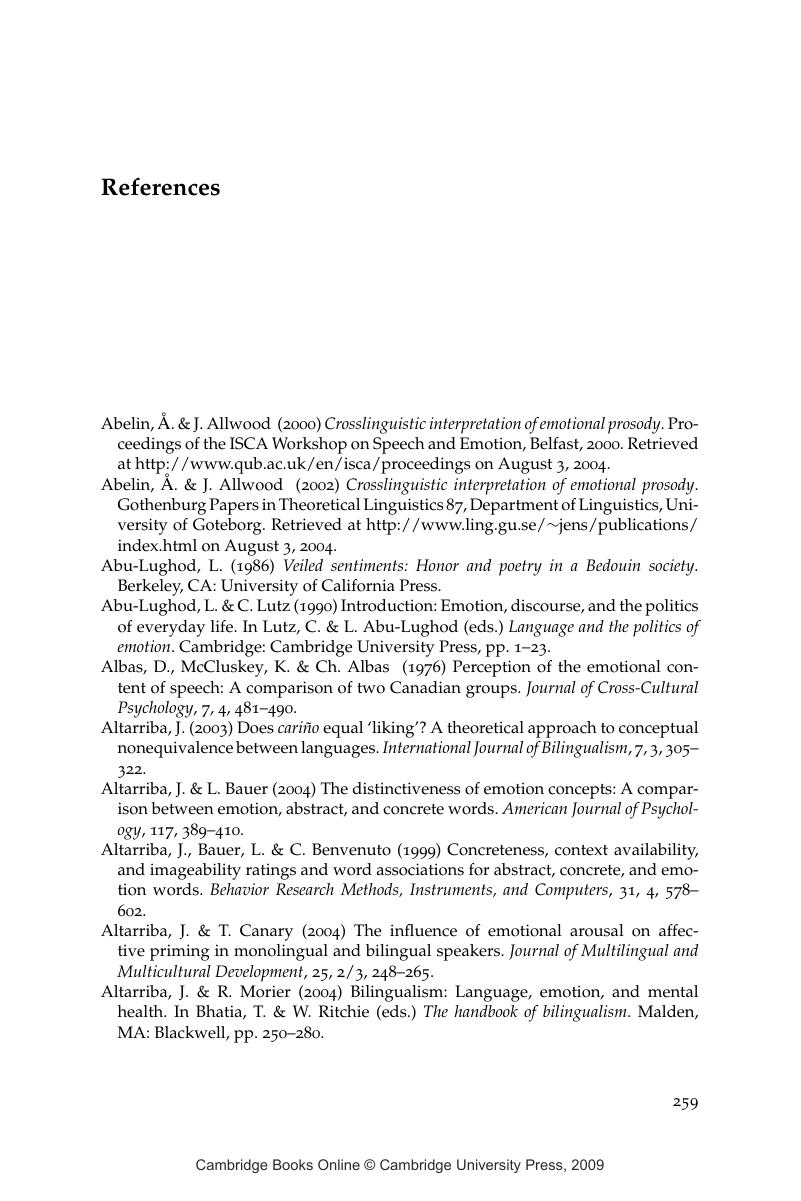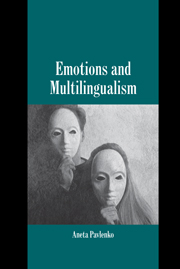Book contents
- Frontmatter
- Contents
- List of Tables
- Preface
- 1 Languages and emotions: What can a multilingual perspective contribute?
- 2 Emotions in the study of multilingualism: Framing the questions
- 3 Vocal level: Is the lady angry?
- 4 Semantic and conceptual levels: The bilingual mental lexicon
- 5 Discursive level: I feel zhalko tebia bednogo
- 6 Neurophysiological level: His coeur is where his feelings dwell
- 7 Social cognition: I no longer wanted to speak German
- 8 Emotions and multilingualism: An integrated perspective
- Appendix A Bilingualism and emotions webquestionnaire
- Appendix B Transcription conventions
- References
- Author Index
- Subject Index
- References
References
Published online by Cambridge University Press: 11 November 2009
- Frontmatter
- Contents
- List of Tables
- Preface
- 1 Languages and emotions: What can a multilingual perspective contribute?
- 2 Emotions in the study of multilingualism: Framing the questions
- 3 Vocal level: Is the lady angry?
- 4 Semantic and conceptual levels: The bilingual mental lexicon
- 5 Discursive level: I feel zhalko tebia bednogo
- 6 Neurophysiological level: His coeur is where his feelings dwell
- 7 Social cognition: I no longer wanted to speak German
- 8 Emotions and multilingualism: An integrated perspective
- Appendix A Bilingualism and emotions webquestionnaire
- Appendix B Transcription conventions
- References
- Author Index
- Subject Index
- References
Summary

- Type
- Chapter
- Information
- Emotions and Multilingualism , pp. 259 - 290Publisher: Cambridge University PressPrint publication year: 2006



